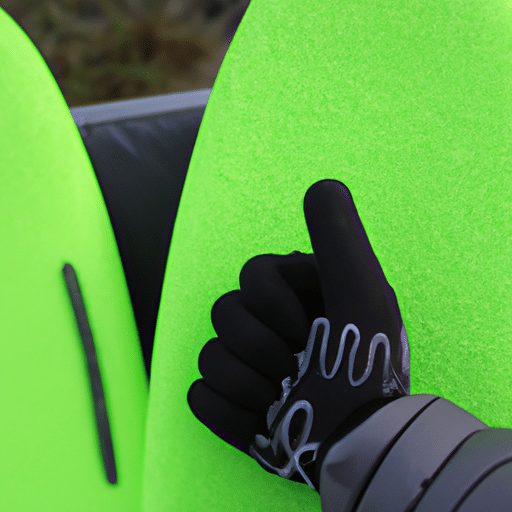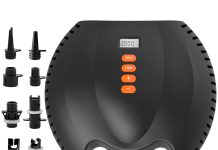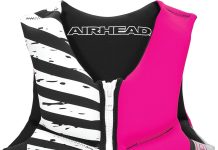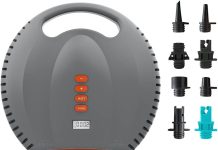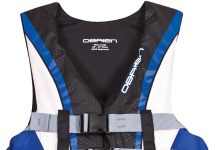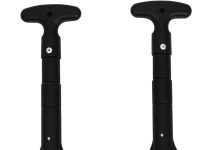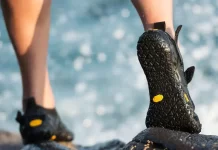Curious about how to keep our hands warm while stand-up paddleboarding (SUP) in chilly weather? We’ve got you covered! As the temperature drops, it’s important to have strategies in place to protect our hands from the bitter cold. Whether you’re a seasoned paddler or just starting out, our article will provide you with practical tips and tricks to ensure that your hands stay toasty and comfortable throughout your SUP adventures. No need to endure frozen fingertips any longer – let’s dive into the world of hand warmth for cold weather SUP paddling!
Wear appropriate gloves
When it comes to keeping our hands warm while SUP paddling in cold weather, wearing the right gloves is crucial. Not all gloves are created equal, so it’s important to choose ones that are specifically designed for cold water activities. There are a few key factors to consider when selecting the right type of gloves.
Choose the right type of gloves
First and foremost, it’s essential to choose gloves that are made for cold water sports like paddleboarding. These gloves are designed to provide insulation and protection against the cold, while still allowing for dexterity and grip on the paddle. Avoid using regular mittens or gloves that are not designed for water sports, as they may not offer the same level of performance and warmth.
Consider the material
The material of the gloves is another crucial factor to consider. Neoprene gloves, for example, are a popular choice for paddleboarding in cold weather. Neoprene is a synthetic rubber material that is known for its excellent insulating properties and ability to repel water. It provides a good balance between warmth and flexibility, allowing us to maintain a comfortable grip on the paddle while keeping our hands cozy.
Ensure a proper fit
Getting the right fit is important for optimal comfort and performance. Gloves that are too tight can restrict circulation and cause discomfort, while gloves that are too loose can allow cold water to seep in, defeating the purpose of wearing gloves altogether. Make sure to try on different sizes and styles to find the perfect fit that allows for movement and flexibility without compromising warmth.
Try out neoprene gloves
Neoprene gloves are specifically designed for water sports and offer excellent insulation against the cold. They are made of a thick neoprene material that provides warmth and protection, while still allowing for flexibility and dexterity. Neoprene gloves are a popular choice among paddleboarders due to their ability to keep hands warm in cold water conditions. They are also typically lined with a soft and comfortable material, further enhancing warmth and comfort.
Consider mitten-style gloves
If traditional gloves don’t provide enough warmth, mitten-style gloves may be worth considering. Mitten-style gloves have a larger compartment for all fingers, which allows the fingers to share warmth and create a cozy environment. While they may reduce dexterity slightly, they can be a great option for those who prioritize warmth above all else. Mitten-style gloves are often lined with fleece or other insulating materials to provide maximum warmth and comfort.
Use hand warmers
Hand warmers are another great option to keep our hands warm while paddleboarding in cold weather. They are small packets that produce heat when activated and can provide hours of warmth. Here are a few tips on using hand warmers effectively:
Activate disposable hand warmers
Disposable hand warmers are easy to use and can be activated by simply exposed to air. Once activated, they produce heat for several hours, keeping our hands toasty warm. To activate a disposable hand warmer, simply open the packaging and shake it to start the chemical reaction. Place the activated hand warmers in your gloves or pockets for instant warmth.
Insert hand warmers into gloves
To maximize the effectiveness of hand warmers, consider inserting them directly into your gloves. This ensures that the heat is trapped inside the gloves, providing continuous warmth to your hands. Make sure to follow the instructions provided with the hand warmers and avoid placing them directly against your skin to prevent burns or discomfort.
Consider reusable hand warmers
If you prefer a more eco-friendly option or want a long-term solution, reusable hand warmers are a great choice. These hand warmers are typically made of materials that can be heated and reused multiple times. They can be activated by boiling them in water or using a microwave. Reusable hand warmers are a cost-effective option in the long run and can be a reliable source of warmth for extended paddleboarding sessions.
Layer up with liners
Another effective way to keep our hands warm is by layering up with glove liners. Glove liners provide an extra layer of insulation and can enhance the overall warmth of our gloves. Here are a few things to consider when using glove liners:
Wear glove liners for extra insulation
Glove liners are thin gloves that are worn underneath our primary gloves. They provide an extra layer of insulation, helping to trap heat and keep our hands warm. Glove liners are typically made of soft and thermal materials like fleece or wool, which are excellent at retaining heat. By adding a layer of glove liners, we can significantly improve the warmth of our hands while paddleboarding in cold weather.
Choose liners made of thermal materials
When selecting glove liners, opt for ones made of thermal materials such as fleece or wool. These materials are known for their excellent insulating properties and ability to retain heat. Thermal glove liners provide an additional barrier against the cold, keeping our hands warm and comfortable even in freezing temperatures. Look for liners that fit snugly and comfortably inside your gloves without restricting movement.
Opt for touchscreen-compatible liners
If you want to stay connected and use touchscreen devices while paddleboarding, consider opting for touchscreen-compatible glove liners. These liners are specially designed with conductive materials in the fingertips that allow us to operate touchscreens without removing our gloves. This feature is particularly useful for those who like to track their paddleboarding sessions or use navigation apps on their smartphones while on the water.
Prevent heat loss
Preventing heat loss is essential to keep our hands warm and comfortable during cold weather paddleboarding sessions. By taking a few precautions, we can minimize heat loss and ensure that our hands stay cozy. Here are some tips to keep in mind:
Avoid wet gloves
One of the quickest ways to lose heat is by wearing wet gloves. If your gloves get wet during your paddleboarding session, make sure to replace them with dry ones as soon as possible. Wet gloves not only provide less insulation but can also conduct the cold. By keeping our gloves dry, we can maintain the warmth of our hands and prevent unnecessary heat loss.
Utilize wrist seals or mitt covers
Wrist seals or mitt covers are additional accessories that can help prevent heat loss. Wrist seals are made of a snug-fitting material that wraps around the wrist area, creating a seal that minimizes the entry of cold air and water. Mitt covers, on the other hand, are large coverings that can be worn over gloves to provide extra insulation and protection against the cold. Both options can be effective in reducing heat loss and keeping our hands warm.
Limit exposure to wind and water
One of the main culprits of heat loss is wind and water exposure. Whenever possible, try to paddle in areas with less wind or choose sheltered routes to minimize the chilling effects of wind. Additionally, be mindful of water splashes and avoid prolonged exposure to cold water. By reducing exposure to wind and water, we can help maintain the warmth of our hands and enhance our overall comfort.
Consider using paddle-specific gloves
To further prevent heat loss, consider investing in paddle-specific gloves. These gloves are designed with features such as reinforced palm areas and wrist seals to provide extra protection against wind, water, and heat loss. Paddle-specific gloves are tailored to the needs of paddleboarders and can provide enhanced insulation and performance compared to regular gloves. They are worth considering for those who frequently engage in cold weather paddleboarding.
Improve circulation
Good circulation is essential for keeping our hands warm. By improving circulation, we can ensure that warm blood reaches our hands, providing them with the necessary heat. Here are a few tips to improve circulation while paddleboarding in cold weather:
Keep your body warm overall
Maintaining a warm body temperature is crucial for good circulation. Make sure to dress in layers and choose clothing that provides insulation and wicks away moisture. By keeping our core warm, we can promote better blood circulation to our extremities, including our hands. Layering up with thermal clothing, such as base layers and fleece, can trap heat and help regulate body temperature.
Move your hands frequently
Staying active and moving your hands frequently can help promote circulation. While paddleboarding, try to engage in movements that involve your hands, such as gripping the paddle or stretching your fingers. These movements can help stimulate blood flow and keep your hands warm. Additionally, consider shaking your hands or rotating your wrists during breaks to further enhance circulation.
Exercise before paddling
Engaging in light exercises before hitting the water can help warm up your body and improve circulation. Activities such as jumping jacks or jogging on the spot can get your blood pumping and prepare your body for the cold water. By increasing your heart rate and circulation prior to paddling, you can help distribute warm blood throughout your body, including your hands.
Massage your hands
Gentle hand massages can help improve blood circulation and provide instant warmth. Before and after your paddleboarding session, take a few moments to massage your hands. Use circular motions and apply gentle pressure to stimulate blood flow to your hands. Massaging your hands can help relieve tension and promote relaxation while also enhancing circulation and heat distribution.
Try heated gear
If you’re looking for an extra level of warmth, consider investing in heated gear specifically designed for cold weather paddleboarding. Heated gear utilizes battery-powered technology to provide continuous warmth to your hands. Here are a few options to consider:
Invest in battery-powered heated gloves
Battery-powered heated gloves are a popular choice for those who want maximum warmth and comfort. These gloves feature built-in heating elements that are powered by rechargeable batteries. The heating elements provide targeted warmth to the hand and fingers, helping to combat the cold and keep your hands cozy. Battery-powered heated gloves often come with adjustable heat settings, allowing you to customize the level of warmth based on your preferences.
Consider heated liners or insoles
If you already have a favorite pair of gloves or boots, you can enhance their warmth by using heated liners or insoles. These accessories are designed to be worn inside your existing gear and provide an extra layer of warmth. Heated liners often feature heating elements that can be activated and adjusted to your desired level of warmth. They are a versatile option and can be used in a variety of gloves or boots, making them a cost-effective choice.
Try heated wrist wraps
For targeted warmth around the wrists, heated wrist wraps are worth considering. These wraps provide heat specifically to the wrist area, which is a common area for heat loss. By keeping the wrists warm, we can help maintain the warmth of the entire hand. Heated wrist wraps are typically adjustable and can easily be secured around the wrists. They are lightweight and easy to use, making them a convenient option for cold weather paddleboarding.
Protect your hands before paddling
Taking proactive measures to protect your hands before paddling can make a significant difference in keeping them warm and comfortable. Here are a few tips to protect your hands:
Apply a layer of moisturizer
Cold weather can be harsh on our skin, leading to dryness and discomfort. Before heading out for a paddleboarding session, make sure to apply a layer of moisturizer to your hands. Moisturizers act as a barrier, locking in moisture and protecting your skin from the cold and wind. Look for moisturizers with hydrating ingredients such as shea butter or glycerin for maximum effectiveness.
Wear waterproof sunscreen
While it may seem counterintuitive, applying sunscreen is crucial even in cold weather. UV rays can still be damaging to our skin, even on overcast days. Make sure to apply a waterproof sunscreen on your hands to protect them from both the sun’s rays and the cold water. Look for sunscreens that offer broad-spectrum protection and have a high SPF rating.
Use barrier creams or balms
In addition to moisturizer, consider using barrier creams or balms on your hands. These products create a protective barrier on your skin, preventing moisture loss and protecting against the cold. Look for creams or balms with ingredients such as beeswax or lanolin, as they are especially effective in sealing in moisture. Apply these products before your paddleboarding session to help maintain the health and comfort of your hands.
Keep your hands dry
Keeping your hands dry is crucial for maintaining warmth and preventing discomfort while paddleboarding in cold weather. Here are a few tips to help keep your hands dry:
Wipe excess water off hands before paddling
Before getting on your paddleboard, take a moment to wipe any excess water off your hands. Use a towel or your clothing to remove any moisture. By starting with dry hands, you can minimize heat loss due to evaporation and keep your hands warmer for longer. It’s a simple step that can make a big difference in your overall comfort.
Consider using paddle-specific gloves
As mentioned earlier, paddle-specific gloves are designed to provide extra protection against water and wind. These gloves are typically made of materials that are quick-drying, allowing them to shed water and keep your hands dry. By investing in paddle-specific gloves, you can reduce the chances of your hands getting wet in the first place, thereby minimizing heat loss and increasing comfort.
Use a quick-drying towel
Having a quick-drying towel on hand is essential for keeping your hands dry throughout your paddleboarding session. During breaks or when you feel excessive moisture, simply use the towel to dry your hands before continuing. Quick-drying towels are designed to absorb and evaporate moisture quickly, making them an excellent accessory for cold weather paddleboarding.
Adjust your paddling technique
Sometimes, it’s not just about what we wear, but also how we paddle. By making a few adjustments to our paddling technique, we can help keep our hands warm and reduce the chances of discomfort. Here are some techniques to try:
Modify hand position on the paddle shaft
Where we place our hands on the paddle shaft can impact how warm our hands feel. To increase warmth, consider placing your hands closer to the blade end of the paddle. This allows for more leverage and puts less strain on your hands, reducing the chances of them getting cold and uncomfortable.
Try alternating hands on the paddle
Giving each hand a break by alternately using them to paddle can help prevent one hand from becoming excessively cold. By distributing the workload between both hands, you can reduce fatigue and maintain warmth. Simply switch your grip every few strokes to ensure both hands get an equal amount of paddling time.
Use a shorter paddle
Using a shorter paddle can also help reduce strain on your hands and keep them warmer. A shorter paddle means less distance to reach the water, which means less time spent with your hands immersed in the cold water. Experiment with different paddle lengths to find the one that allows for comfortable and efficient strokes while minimizing hand exposure to the cold.
Consider a different grip style
Changing your grip style on the paddle can also make a difference in hand comfort. Instead of a traditional palm-grip, try using a fingertip grip or an open-handed grip. These grip styles can alleviate pressure on your hands and reduce the chances of them becoming cold and uncomfortable. Find the grip style that feels most natural and comfortable for you.
Consider hand exercises
Hand exercises can help warm up and loosen your hands before your paddleboarding session. Here are a few exercises to try:
Warm-up exercises before paddling
Before hitting the water, take a few moments to warm up your hands with simple exercises. Start by gently shaking your hands to increase blood flow. Then, make a fist and release repeatedly, stretching and flexing your fingers as you do. Finally, rotate your wrists clockwise and counterclockwise to loosen them up. These warm-up exercises can help increase circulation and prepare your hands for paddling.
Stretch and flex your fingers
Stretching and flexing your fingers throughout your paddleboarding session can promote blood circulation and prevent stiffness. Open your fingers wide and hold for a few seconds, then curl them into a fist and hold again. Repeat this stretching and flexing motion periodically to keep your fingers nimble and improve overall hand comfort.
Rotate your wrists
Rotating your wrists can help relieve tension and increase blood flow to your hands. Extend your arms in front of you and gently rotate your wrists in a circular motion, first clockwise and then counterclockwise. Perform this rotation several times before and during your paddleboarding session to keep your wrists loose and your hands warm.
Squeeze a stress ball
Using a stress ball or grip strengthener can help warm up your hands and improve grip strength. Squeeze the stress ball or grip strengthener repeatedly, focusing on contracting your grip muscles. This exercise can help increase blood flow to your hands and keep them warmed up while paddleboarding.
By following these tips and incorporating them into your cold weather paddleboarding routine, you can keep your hands warm and comfortable throughout your entire session. Remember to choose appropriate gloves, use hand warmers, layer up with liners, prevent heat loss, improve circulation, try heated gear, protect your hands, keep your hands dry, adjust your paddling technique, and consider hand exercises. With the right preparations and gear, you can enjoy the beauty of paddleboarding even in chilly weather without sacrificing the comfort of your hands. Stay warm and happy paddling!

